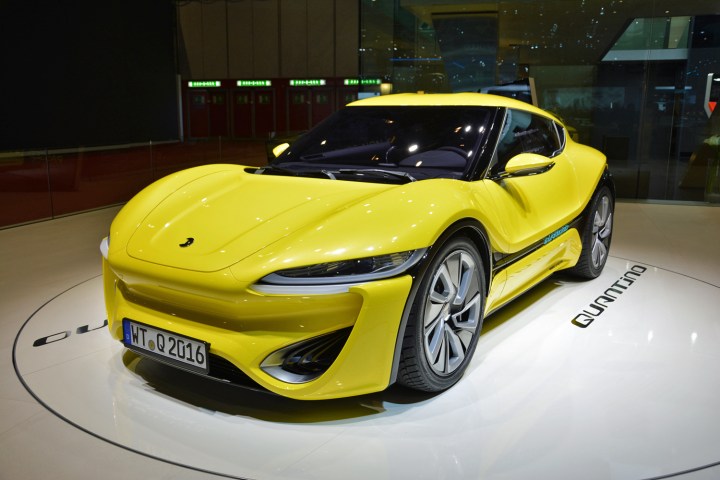
Company founder Nunzio La Vecchia told British magazine Autocar that he’s in talks with a “large manufacturer that’s not German” about turning NanoFlowcell’s largely experimental drivetrain into a reality. He declined to give more specific details, though his comments rule out the usual suspects like Mercedes-Benz, Volkswagen, and components manufacturer Bosch.
La Vecchia hinted the potential partner is largely interested in technology, not in design, which means sleek, sci-fi-esque concepts like the Quantino (pictured) and the Quant F will remain at the prototype stage.
Using salt to create electricity is a decades-old idea that’s less complicated than it seems. NanoFlowcell’s Quantino is equipped with a 48-volt drivetrain that uses two types of ionized fluids — one with a positive charge, one with a negative charge — stored in separate tanks to generate electricity. NanoFlowcell carefully points out that ionic fluid is essentially salt in a liquid state, and that it’s neither toxic nor flammable.
The electricity generated by pumping these fluids through cells is sent to all four wheels via four electric motors that each produce just over 27 horsepower; as a result, the Quantino’s total output is 109 horsepower. It all sounds too good to be true, but NanoFlowcell is currently testing two prototypes that are registered and fully street-legal in Germany. The ambitious startup isn’t yet another vaporware company, though only will time tell if ionized fluid is the fuel of the future.
We’ll find out more about NanoFlowcell’s plans to mass-produce the technology if it strikes a deal with its mysterious partner. If all goes according to plan, La Vecchia believes that a salt-powered car — and the network of stations needed to refuel it — can become a reality in just four or five years’ time.



